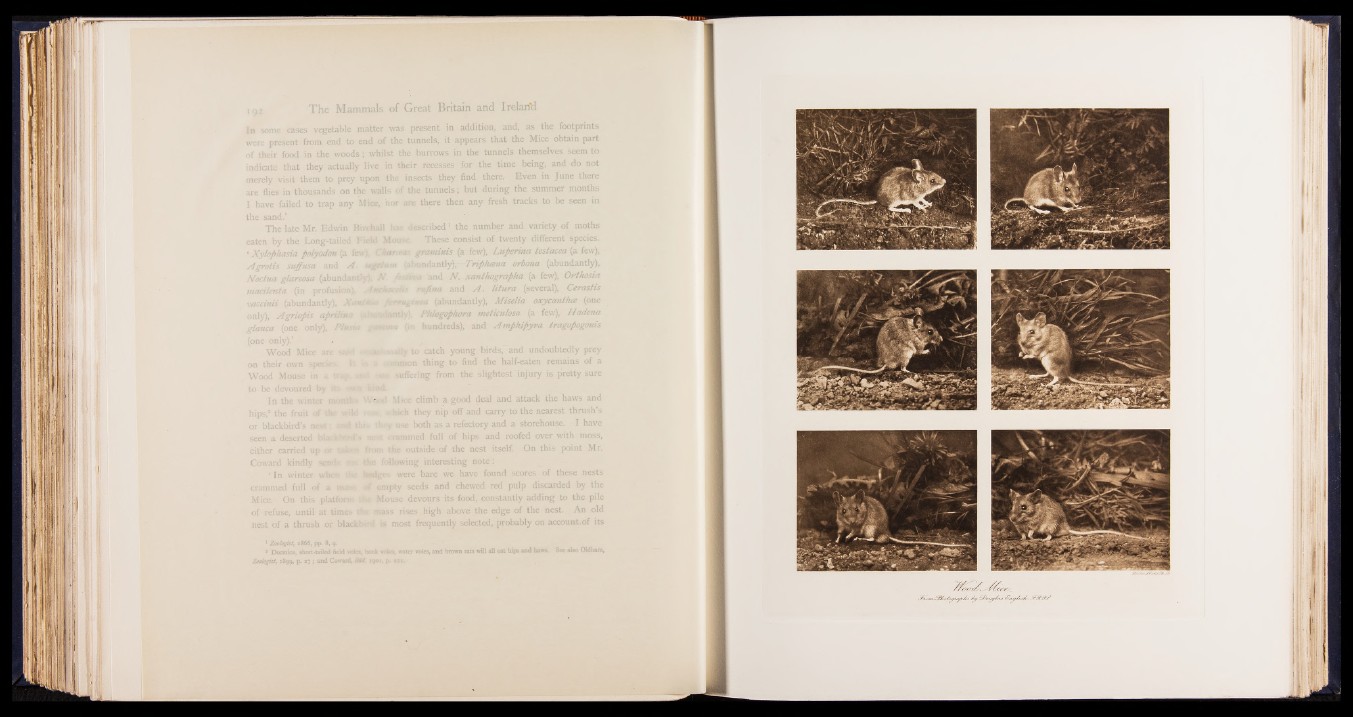
In some cases vegetable matter was present in addition, and, as the footprints
were present from end to end of the tunnels, it appears that the Mice obtain part
of their food in the woods ; whilst the burrows in the tunnels themselves seem to
indicate that they actually live in their recesses for the time being, and do not
merely visit them to prey upon the insects they find there. Even in June there
are flies in thousands on the walls of the tunnels; but during the summer months
1 have failed to trap any Mice, nor are there then any fresh tracks to be seen in
the sand.’
The late Mr. Edwin Birchall has described 1 the number and variety of moths
eaten by the Long-tailed Field Mouse. These consist of twenty different species.
■ Xylophasia polyodon (a few), Charceas gram inis (a few), Luperin a tcstacea (a few),
A g ro tis suffusa and A . j v'mn (abundantly), Triph ana orbona (abundantly),
Noctua glareosa (abundantly), A /estiva and A . xanthographa (a few), Orthosia
vaccinii (abundantly), Ai/v.'- rt rru gim a (abundantly), Miseha oxycanthez (one
only), A g rio p is aprilin a (abundantly), Pklogophora meticulosa (a few), Hadena
glanca (one only), P h a a gamma fin hundreds), and Am phipyra tragopogonis
(one only).’
Wood Mice are said >r,av :■ .aily to Catch young birds, and undoubtedly prey
on their own species. It . . summon thing to find the half-eaten remains of a
Wood Mouse in a trap, and o x suffering from the slightest injury is pretty sure
to be devoured by its fetnd.
In the winter months Wood Mice climb a good deal and attack the haws and
hips,2 the fruit of the wiki rose which they nip off and carry to the nearest thrush’s
or blackbird’s nest; aiwt this they use both as a refectory and a storehouse. I have
seen a deserted blaefcbbsl’s nest crammed full of hips and roofed over with moss,
either carried up or takm from the outside of the nest itself. On this point Mr.
Coward kindly send:, the following interesting note:
In winter when tUft hedges were bare we have found scores of these nests
crammed full of a s o f empty seeds and chewed red pulp discarded by the
Mice. On this platform the Mouse devours its food, constantly adding to the pile
of refuse, until at times the mass rises high above the edge of the nest. An old
nest of a thrush or blackbird is most frequently selected, probably on account.of its
1 Zoologist\ 1866, pp. 8, 9.
* Dormice, short-tailed field voles, bank votes, water Zoologist, 1899, p. 27 ; and Coward, ibid 1901, p. 22r.
voles, and brown tats will all eat hips and haws. See also Oldham,